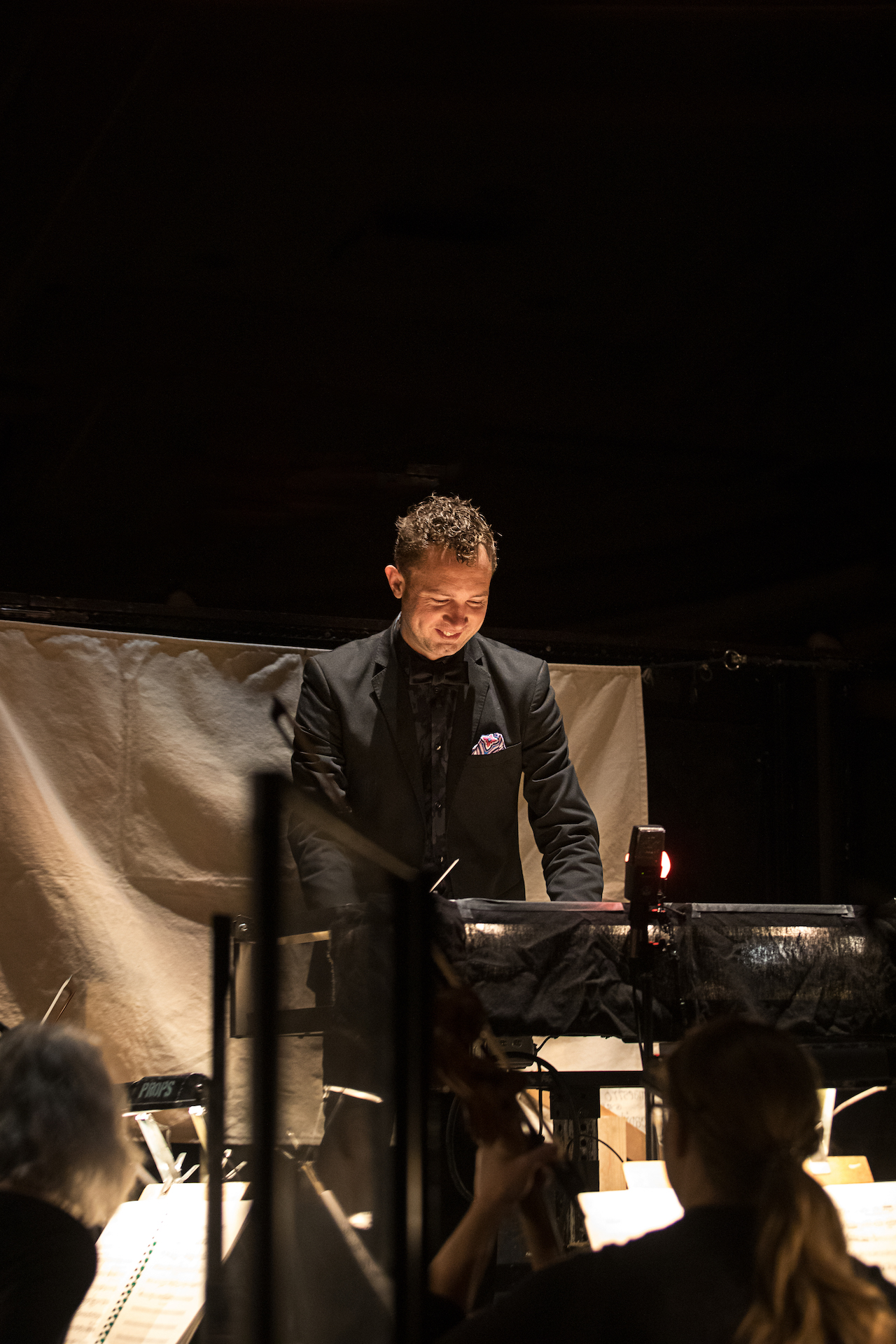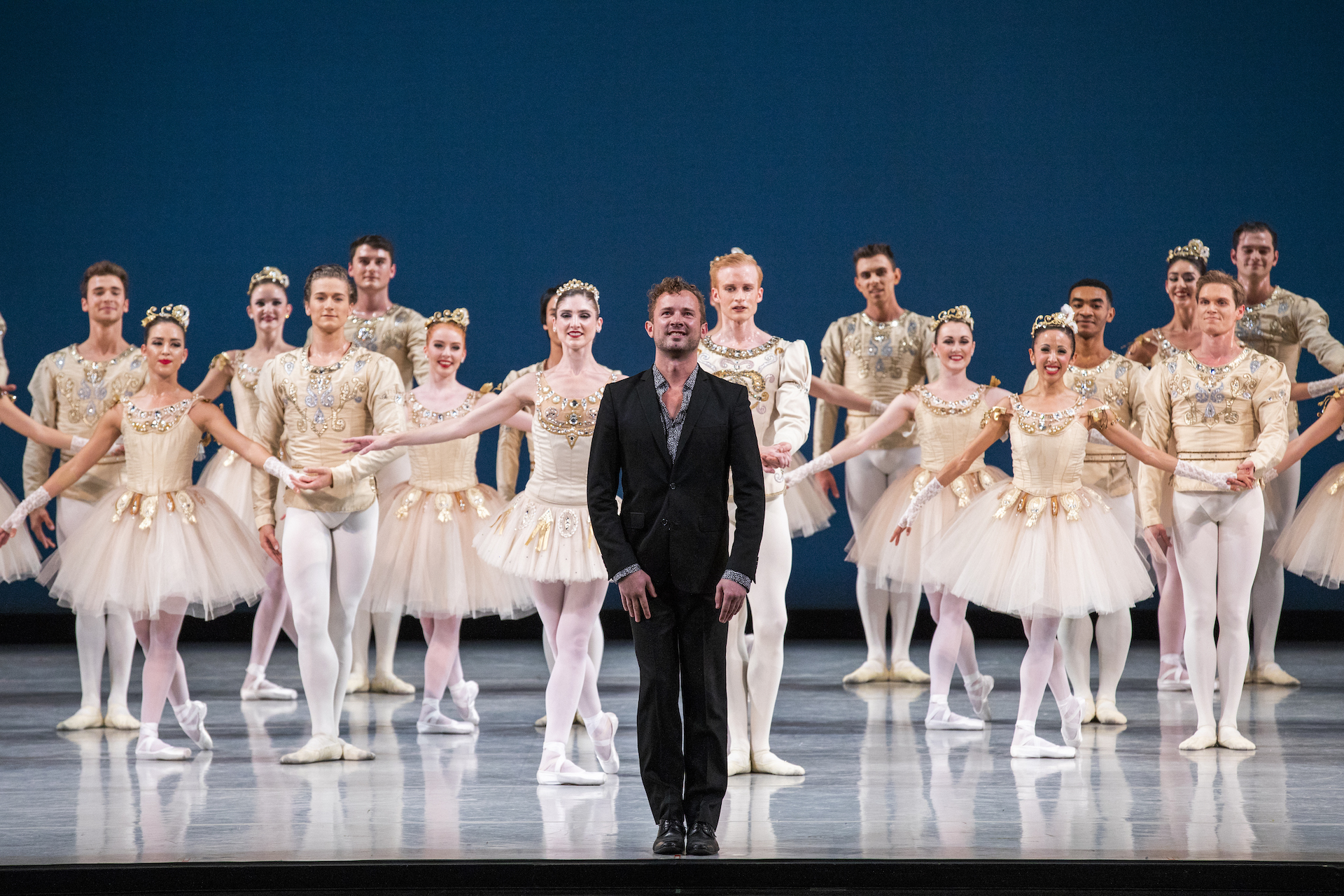A Conversation with Ballet West Music Director Jared Oaks
Jared Oaks speaks deliberately, with long pauses between sentences, as if he’s turning over each thought carefully in his mind before articulating it. But when in the pit, as conductor of the Ballet West Orchestra, Oaks makes countless rapid-fire decisions in service of what’s likely his biggest his role as the ballet company’s music director: maintaining a seamless connection between the musicians and what is happening on the stage.
“As the conductor, I am the only one in the orchestra who can see the dancers,” Oaks says. “This requires a lot of trust for the musicians, as well as the dancers, to go along with me. It’s really exciting when the orchestra and dancers are so in time and supportive of what I’m asking of them that, sometimes, we can make magic.”

Oaks joined Ballet West as a rehearsal pianist in 2008 while he was still in his second year of graduate school at Brigham Young University.
“I racked up quite a few tickets that first year from parking illegally as I tried to get between rehearsals in downtown Salt Lake and classes down in Provo,” he says. One year later, after earning his master’s degree, Oaks was promoted to principal rehearsal pianist and assistant conductor—a rapid progression he attributes, in part, to the attentive mentorship of the company’s then-longtime music director, Terence Kern. In the years that followed, Oaks was promoted to associate conductor and then associate music director. In 2018, he was chosen to take the orchestra’s top spot, making him one of the youngest Top-10 ballet company music directors in the U.S. “Although I studied ballet when I was an undergrad, I never planned for a career in it,” Oaks says. “Now I can’t imagine a better fit for my skills and interests.”

Most of those micro-decisions Oaks makes during performances have to do with tempo. “The slower pieces are the ones that tend to require more adjustments,” he says. “To highlight the quality of movement, I may speed up or slow down tempo. But if I’m only considering the dancers, I could leave the orchestra in the dust. And then there’s always the possibility that a musician will run out of breath.” To provide the flexibility to push or slow down tempo, Oaks uses a metronome in rehearsals to establish a firm connection between the body, brain and the music, for both the musicians and the dancers. “When everyone has a strong grasp on what to expect, then those performance micro-adjustments are much easier for everyone to pull off,” he says.
Ballet West’s 2021-22 season—its 58th—represents its first full slate of live performances since the pandemic. Based on the reaction Oaks observed during the company’s Dracula season opener, audiences are more than ready to be back in the Capitol Theatre for the ballet. “We had some of the biggest and most enjoyable audiences for Dracula that I can remember since I’ve been with Ballet West,” he says.
Two of this season’s upcoming shows that Oaks is particularly excited about are Romeo and Juliet (February 11 – 19) and Carmina Burana with Glass Pieces (April 1 – 9).
Romeo and Juliet, Oaks says, is one of the most beautiful pieces in the standard repertoire, and Ballet West’s production will feature choreography by Michael Smuin, founder of San Francisco’s Smuin Contemporary Ballet and student of Ballet West founder, Willam F. Christensen. And for Carmina Burana, Oaks is making his first stab at conducting a choral ballet. “I studied choir as an student and actually went to school with some of the people who will perform in Carmina Burana,” he says. “So, this production will bring that piece of my life full circle.”

Before then, of course, is the return of Ballet West’s beloved annual presentation of The Nutcracker. While conducting this well-known ballet could seem to get, well, predictable, Oaks finds ways to mix things up with almost every performance. “It’s about finding different ways of shaping the music versus changing it,” Oaks says. “If you can enhance the music that way to become something more beautiful than it already is, it has the power to move the dancers emotionally, which in turn makes the experience for audiences that much richer.”
Oaks will step away briefly from the Capitol Theatre pit to guest conduct Sarasota Ballet’s presentation of Giselle on December 17 and 18. But have no fear. He’ll be back in Utah in time to conduct the balance of Ballet West’s Nutcracker performances through December 26.
In his scant spare time, Oaks enjoys composing and is currently working on a short ballet for violin and piano for Washington’s Mid-Columbia Ballet based on the concept of reflection. “The piece is inspired by Shamanic mirrors,” Oaks says. “It’s more of a literal translation of the theme we were asked to explore, and one that I hope lasts a little longer than simply reflecting on this last, difficult year.”
Can local audiences expect to be treated to original work by Oaks sometime soon? Stay tuned. “I’m working on another piece based on astrology that I hope to debut with Ballet West someday.”
When you go: Tickets for Ballet West’s 58th season are on sale now at boxoffice.balletwest.org. Please note that masks are required for all attendees, regardless of vaccination status.
Written by Melissa Fields
